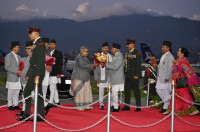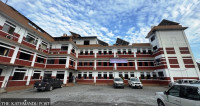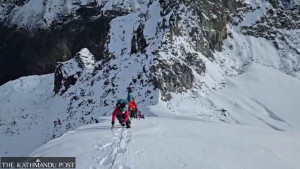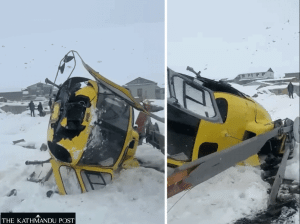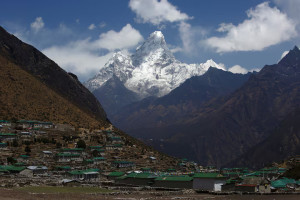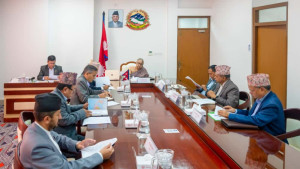National
NEA leadership instructs to complete New Khimti-Bahrbise section of transmission line by July
The section is a part of Tamakoshi-Kathmandu transmission line project.
Post Report
The top leadership of Nepal Electricity Authority has instructed the officials and the contractor involved in the construction New Khimti-Bahrbise section of the Tamakoshi-Kathmandu 220-400 KV transmission line project to complete the task by July this year.
The authority has given high priority to the construction of the new Khimti-Bahrbise section to prevent the potential loss of electricity from the 102 MW central Bhotekosi Hydropower project at Sindhupalchowk constructed under the Chilime Hydropower Company, due to the lack of transmission connectivity.
A high-level team including Managing Director of the NEA Kulman Ghising, Deputy Managing Director of Transmission Directorate Dirghayu Kumar Shrestha and Deputy Managing Director of Project Management Directorate Tara Prasad Pradhan visited the site on Saturday.
The team held discussions regarding the progress of the construction of the transmission line and substation, according to a press statement issued by the state power utility. Highlighting the importance of the project, NEA Managing Director Kul Man Ghising said if this project is completed, there is an option to connect the electricity to Middle Bhotekosi Hydroelectric Project directly.
“The project’s donor agency has also been requesting to clear hurdles including adding construction equipment and workforce before the monsoon season begins, for the completion of the construction works at the earliest.”
The length of the transmission line from New Khimti Substation located at Sankhe (Fulasi) in Manthali Municipality-13 of Ramechhap to Bahrbise Substation of Sindhupalchok is 43km. Out of the 118 towers of the new Khimti-Bahrbise transmission line section passing through Ramechhap, Dolakha and Sindhupalchok districts, the foundations of 93 towers have been laid, 73 towers have been erected, 20 km of wire has been placed and work is underway to lay the foundation of six towers and the erection process of three towers are in progress. The process of land acquisition for the construction of three towers in Ramechhap has started, according to the NEA.
Out of the 84 towers in Dolakha, construction works of one tower to be built in Sittali of Melung Rural Municipality-7 have not begun due to the obstruction from the land owner. The landowners have been obstructing the construction expressing discontent over the fixed compensation of Rs 1 million for the land to be acquired.
Out of 31 towers in Sindhupalchowk, the foundations of 13 towers have been laid and three towers have been erected so far. Likewise, access roads are being constructed to reach the construction site of the remaining towers located in geographically difficult locations. Around 70 percent construction of the New Khimti-Bahrbise section works has been completed.
Chinese companies Guangxi Transmission and Substation Construction and Shenzhen Claw Electronics were awarded the contract for the construction of the new Khimti-Baharbise transmission line. The NEA had terminated the contract with the companies while the contract period was still remaining after they failed to begin initial construction works even after 74 percent of the contract period had passed.
The same companies are constructing the 220 kV Barhsbise substation and the NEA has given June-July deadline to complete the construction, read the statement.
Following the termination of the contract, the NEA issued a tender notice for the construction of the transmission line and Indian company KIC International Ltd was selected to undertake the construction works after the signing of a contract in May-June 2019.
Construction works are underway for the 46km-long 400 KV double circuit from Bahrbise to Lapsiphedi in Kathmandu. The Tamakosi-Kathmandu transmission line is being constructed to bring the electricity generated from various hydroelectric projects at the Tamakoshi and Sunkoshi rivers and at its tributaries to Kathmandu valley and link it into the national transmission grid.
The transmission line has investment from the Nepal government, NEA and a concessional loan from the Asian Development Bank.




 24.12°C Kathmandu
24.12°C Kathmandu

